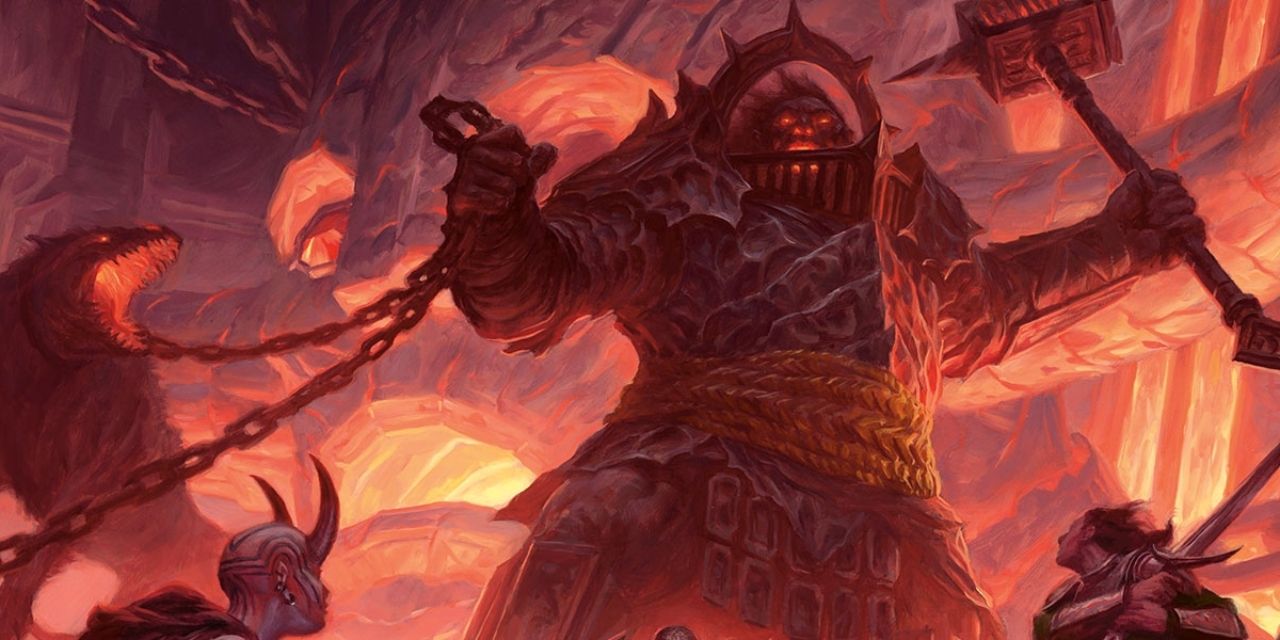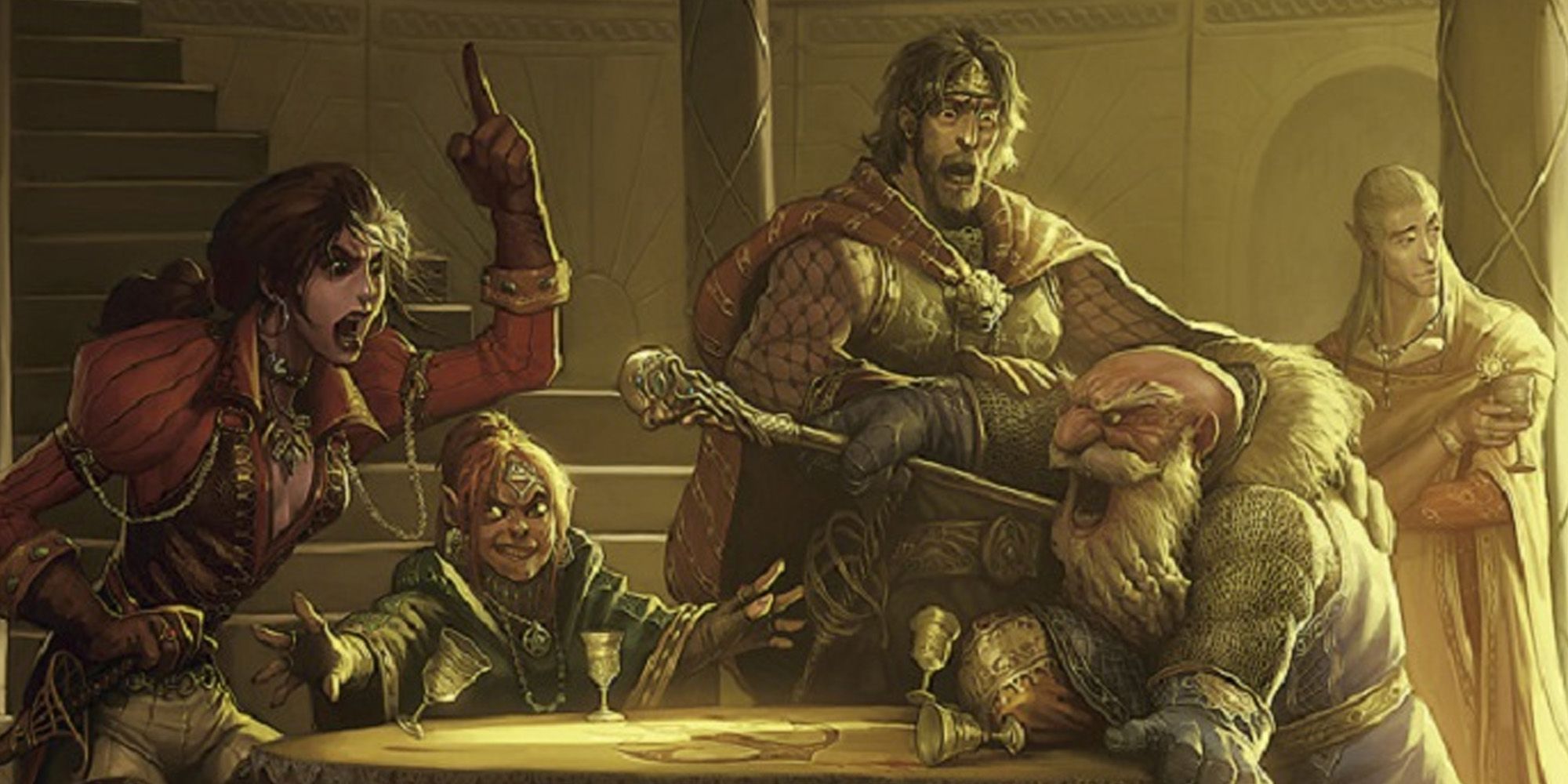2019 saw the release of a unique module for Dungeons & Dragons. Baldur's Gate: Descent Into Avernus leads players down the road to hell in the form of an emotionally-charged story with expanded lore on D&D's take on the infernal underworld. This pre-written Fifth Edition campaign not only serves as its own adventure, but the spiritual predecessor for Baldur's Gate III.
Descent Into Avernus is split into five chapters. One of the two overarching goals is to redeem, kill or join Zariel, a fallen angel turned archdevil. Zariel rules over Avernus, the first layer of the Nine Hells and the main theater of the Blood War between devils and demons. The other goal lies in securing the lost holy city of Elturel, which Zariel dragged into the depths of Avernus. Without intervention, the ruins and survivors still huddling inside will sink and drown in the River Styx.
RELATED: Dungeons & Dragons: Every Tasha's Cauldron of Everything Subclass, Ranked
Who Will Enjoy Baldur's Gate: Descent Into Avernus?
Descent Into Avernus is best enjoyed by experienced D&D players. Those who have explored pre-made adventures before will recognize the world of Faerûn and the locations found within it. Such players will likely appreciate the references scattered throughout the campaign like the statue of Minsc and Boo or the possession of a duke by an illithid. Additionally, if the Dungeon Master and players are looking for a challenge, Descent Into Avernus delivers intense battles early in the game and offers room for role-playing difficult moral situations.
In terms of plot, Descent Into Avernus can appeal to a variety of players. DMs can work with their party to spin a more compelling story and drive them to glory or ruin. Righteous crusaders looking to smite evil may seek to thwart the twisted machinations of unspeakable evil. Dastardly personalities serving under fiendish masters may earn favor and garner power for their own gain. Adventurers itching for a challenge may find the harsh wastelands of the underworld compelling enough to conquer. No matter their walk of life, Avernus finds a use for every soul.
RELATED: Dungeons & Dragons: Shape Water Is One of the BEST Cantrips - If You Know How To Use It
The Beginning Is Unnecessarily Difficult
The most glaring issue with Descent Into Avernus is that "Chapter 1: A Tale of Two Cities" contains a host of difficult situations capable of killing an entire party of low-level characters. Before the adventurers reach Avernus, they must first traverse Baldur's Gate. Here, they face threats as great as a group of 11 pirates and a sprawling dungeon. While not deadly on their own, bandits and cultists in overwhelming numbers can outmatch characters in their first or second level. Players discouraged by the pace may quickly fall into a slog and give up on the module entirely.
The story would be more profound if the players' own descent into Avernus came about quicker. One way to accomplish this is avoiding Elturel altogether. Because of its familiarity among returning fans, Baldur's Gate as the sinking city would have hit harder emotionally, and starting here would cut out the lengthy quest that leads to obtaining the infernal puzzle box needed to enter the underworld. Another option is bypassing Baldur's Gate and Candlekeep. A DM willing to work on scaling may place the party in Elturel as it falls, which would immediately establish the tone and urgency of the adventure.
United the Party Stands, Divided They Are Damned
Role-play is an important component of Descent Into Avernus thanks to an interesting mechanic where the adventurers must choose a "Dark Secret" to be involved in. The book provides plenty of example scenarios from murder to thievery, but the DM should encourage the party to get creative. The entire group must agree on the nature of the secret and each person's role. From there, the DM should use the secret -- and the character backstories -- to create greater threats and personalize the horrors taking place in Avernus.
While infighting makes for an interesting role-playing experience, party unity matters. Communication and respect are critical in this adventure, and the characters must work together. The stakes in Avernus are high, and innocent souls hang in the balance. Devils offer helpful, deceptive deals around every corner. When half of the characters are good and the other half are neutral or evil, the bargain could split the party and impact important decisions. If fighting devils and demons wasn't enough of a challenge, a group at odds with one another is prone to collapse.
As a pre-written adventure, Baldur's Gate: Descent Into Avernus has its flaws. Overly difficult fights in a long introduction make for a slow start that can bog players down before they reach the apex of their journey. In spite of this, it's overall a great module that leaves plenty of room for a DM to make changes as they see fit. Descent Into Avernus promotes role-playing and allows for significant character development. The story itself is compelling, and offers multiple endings depending on what the players do. The road to hell is winding and the way is difficult, but this is an adventure worth taking for veteran DMs and dedicated players.




